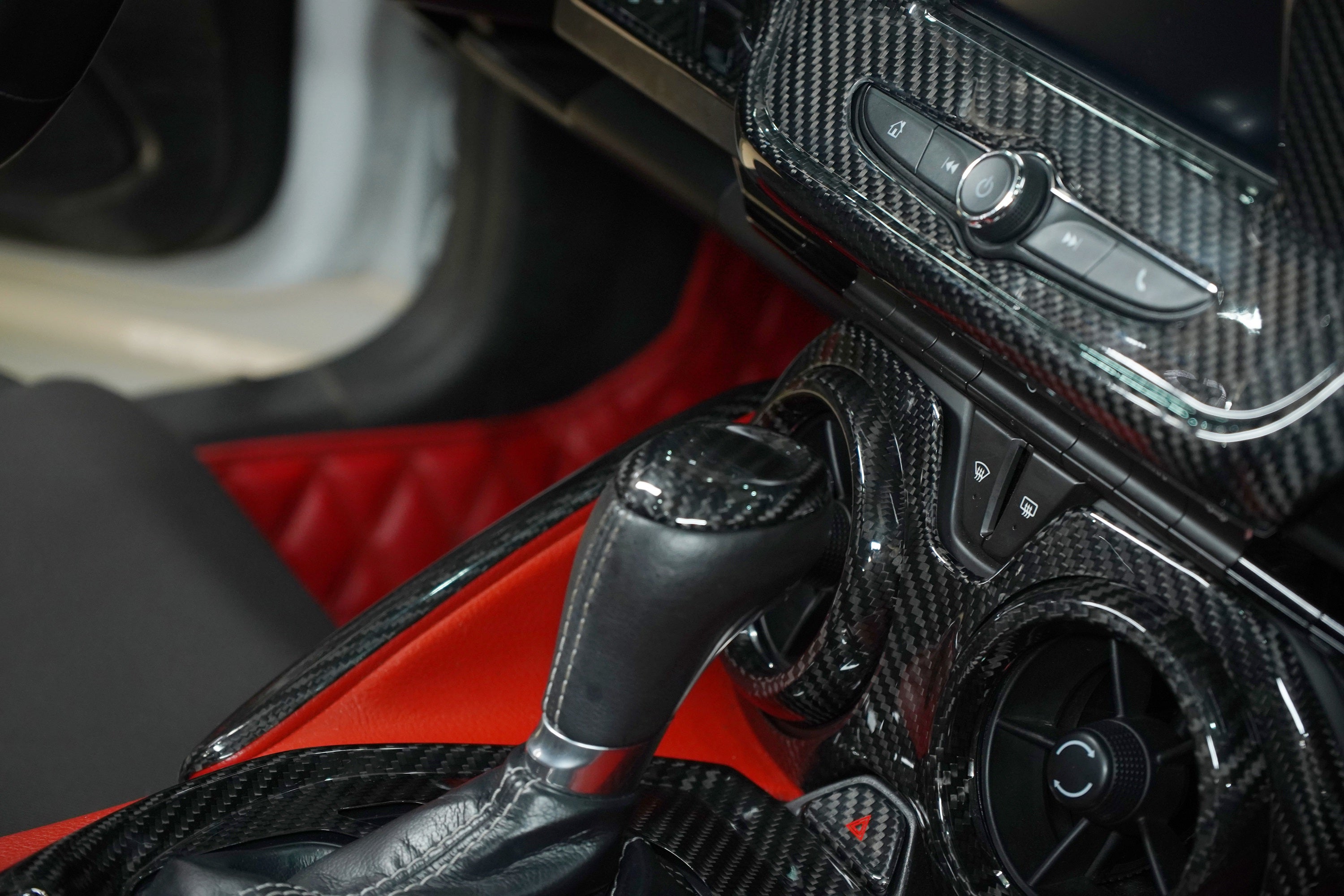In the realm of automotive design and customization, carbon fiber has steadily gained popularity since the late 20th century. Its lightweight and high-strength properties have made it a favored choice for both carbon fiber inside car and exterior automotive components. However, with advancing technology and shifting market trends, does carbon fiber interior still hold its allure in automotive interiors? Let's delve into this topic.
Characteristics and Advantages of Carbon Fiber
Carbon fiber consists of fibers composed of carbon atoms, impregnated and cured with a resin matrix, offering several key advantages:
Lightweight: Carbon fiber is approximately 70% to 80% lighter than steel and 30% to 50% lighter than aluminum, effectively reducing overall vehicle weight, enhancing fuel efficiency, and improving performance.
High Strength: Despite its lightness, carbon fiber exhibits exceptional strength, several times stronger than steel, providing excellent safety and structural support.
Design Flexibility: Carbon fiber can be molded into various complex shapes, accommodating diverse design requirements and lending a modern and technological aesthetic to automotive interiors.
Application of Carbon Fiber in Automotive Interiors
Initially prevalent in racing and high-performance vehicles such as Formula 1 cars and supercars, carbon fiber has progressively entered the interiors of more mainstream consumer vehicles, including:
Dashboards and Center Consoles:Carbon fiber's texture and visual appeal enhance the stylishness and luxury feel of dashboards and center consoles.
Door Panels and Trims: Replacing traditional materials like plastics and wood, carbon fiber adds a sense of modernity and sophistication to carbon fiber car parts.
Seat Frames: Using carbon fiber for seat frames not only reduces weight but also enhances stability and comfort.
Market Trends and Future Prospects of Carbon Fiber
Despite its numerous advantages in automotive design, the market position of carbon fiber faces challenges and changes:
Cost Considerations: The manufacturing cost of carbon fiber remains high, limiting its application in mass-market vehicles. However, advancements in technology and economies of scale are gradually lowering production costs, promoting wider adoption of carbon fiber.
Sustainability Concerns: With increasing environmental awareness, automakers and consumers are beginning to scrutinize the sustainability of carbon fiber, including its carbon footprint during production and recyclability.
Design Trends Shifts: As consumer demand shifts towards personalization and customization, traditional materials such as leather and wood regain attention, potentially affecting the use of carbon fiber in designs.
By delving into the application of carbon fiber in automotive interiors and examining current market trends, we gain a better understanding of its potential directions and challenges in future automotive design. This provides valuable insights and considerations for automakers and consumers alike as they navigate the evolving landscape of automotive materials and design trends.


Comments (2)
An insightful read! The article effectively highlights the enduring appeal and practical advantages of carbon fiber in automotive interiors.
Great insights on carbon fiber interiors! This post explains trends clearly and highlights why carbon still holds its appeal in modern car design. Very informative read!